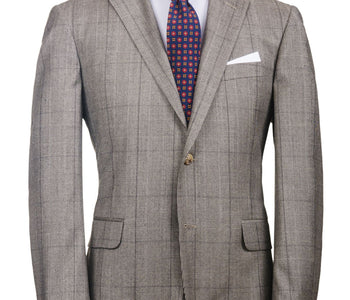Your Cart is Empty
Runi Willner - May 22, 2020
Fabric Knowledge - The Spinning Cycle

Unless you're a serious fashionista or fabric geek you may not fully appreciate this article. If you are however, you'll find some of the most interesting knowledge regarding fabrics and the way they are created. As I'm sure many of you, I've always been intrigued at the luxury of certain fabrics and how different thread counts, mills and wools can make such a big different to the final product. This article will give a basic understanding of the spinning cycle and how the fabric is created.
The Spinning Cycle
1. Carding.The fibers are separated from one another and placed in a cylindrical form. This process separates the the wanted and unwanted fibers and removes any of the short, undesirable pieces. The fibers through the spinning process will get increasingly thinner and will eventually produce spun yarn. The woolen (carded) yarns however are not combed yet or placed parallel to one another and can have shorter and longer threads when laid out.
2. Combing. The yarns are placed parallel and further eliminates any short fibers or any impurities in the fiber. The combing process is costly, because many fibers are eliminated and only the fibers who are perfect can be moved on to the next phase for high-quality fabrics
3. Spinning. After the first two steps the yarn is actually spun. Some crucial factors are decided in the spinning stage including the relationship of the lengthen and weight as well as the yarn count.
4. Twisting.Threads can be either Single-Ply or Multiple. After the yarn is finished with spinning there are two machines that are used to twist multiple threads. The first machine is a "doubler" which combines two or more threads and the second is "twister" which twists the threads after they are combined. Obviously the more threads the two ply fabric will be more durable than a single-ply one.
Fun Fact: The History of Spinning
Hand spinning was the first form of spinning and the materials were provided by mainly Women and Children in the late 1500's and would provide yarns for the Men who operated the looms. Once the "spinning jenny water frame" was introduced, most hand work was replaced by machines and the greatest production was in Yorkshire, England which had the most resources of water, manpower and raw materials. The British Government was reluctant to export the materials which resulted in the development of artificial fibers out in Asia after World War l
Provide useful, relevant information. Show prospects how to use your product, give them instructions or how-tos, and/or entertain them.

The Spinning Jenny invented by James Hargreaves
Be sure to follow along on the fabric knowledge journeyThe next article featuring "Phases of the Weaving Cycle"
Send us an email info@gcclothiers with any related feedback or questions



